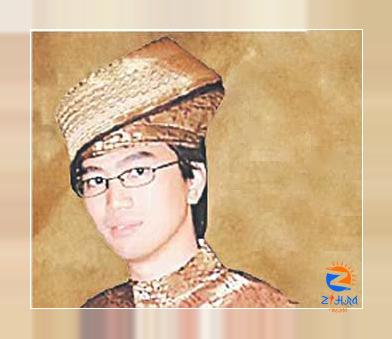
[ad_1]

“THIS is for all the boys and girls who look like me,” said Tan Sri Michelle Yeoh upon receiving her Oscar for Best Actress in the film Everything Everywhere All at Once.
That statement speaks to the power of representation in inspiring others towards achievement, and minorities and especially people of Southeast Asian descent all around the world took huge pride at that moment.
It is of course necessary that Tan Sri Michelle is actually a brilliant actress – for me, her role of Captain Philippa Georgiou (from Langkawi!) in Star Trek: Discovery is stellar – but that element of representation may have been a factor when the roughly 10,000 members of the Academy of Motion Picture Arts and Sciences casted their votes.
The merits of the individual, versus what they might represent, is a common tension in Malaysian elections as well. In general elections, voters weigh between the party logo and the individual attributes of the candidate (their race and religion perhaps more important to some voters than their educational qualifications or work experience).
Of course, the world’s most coveted prize for acting brings a different kind of power and influence than being a Member of Parliament, but even then, the award has triggered considerable commentary in Malaysia. Congratulations were conveyed from the Yang di-Pertuan Agong and Prime Minister, but social media showed a range of opinion. There were those who accused her for ditching Malaysia and doing little for her country, and there were those that blamed Malaysia for ditching her, doing little to build on the talents that make her the star she is today.
The latter is quite a common phenomenon. Malaysians who migrate and subsequently do well abroad are celebrated (and genuinely so) – whether it is Senator Penny Wong of Kota Kinabalu who is now the Australian Foreign Minister, Justice Eason Rajah of Ipoh who is now a UK High Court Judge, and a growing number of celebrity chefs and sports personalities – but the underlying reasons for why they left are omitted.
There was another charge of hypocrisy, in that the government congratulated her at a time when censorship of the arts is an extremely live issue, as seen in social media outrage of certain trailers and films, ministerial statements that cause great disappointment among the arts community, and a feeling that Malaysia is the last-considered when it comes to tours by major artistes because of the various restrictions that exist (although local Blinks remain ecstatic that BLACKPINK made it here). Certainly, the content of Tan Sri Michelle’s Oscar-winning film contains scenes and elements that would be censored in Malaysian cinemas.
Indeed, the relationship between governments and the arts is always a tricky one. Art flourishes when there is freedom, and yet art can also be a vital tool to foster national unity, and a vehicle to better teach our history (itself a contentious issue when the Ministry of Education determines the curriculum). Having said that, the stubborn marrying of Tourism, Arts & Culture into one ministry continues to demote these important roles to one that is about generating revenue from tourists.
Ultimately, initiatives to excel and inspire must come from the arts community itself, and I was pleased to participate in two recently.
First was the highly acclaimed Jaya Ram – a new Odissi production by Guru Gajendra Kumar Panda in partnership with Datuk Ramli Ibrahim of Sutra Foundation – in Seremban.
In my speech, I congratulated the state National Department for Culture and Arts (JKKN) for hosting such a rare dance event, and reminded the audience that the figure of Ramayana has been present in Malay literature and wayang through the adaptation of Seri Rama for centuries.
It was thus apt that the production celebrated the bilateral relationship between Malaysia and India, where Jaya Ram was performed at three major festivals. In including dancers from local organisations, such tours provide wonderful opportunities for young performers, too.
The following weekend, amid the beautiful surroundings of Janda Baik – specifically in a secluded valley adorned by a stream observed by families of monkeys – Hands Percussion held its first ever retreat open to the public. Over two days there was a drum circle, dance and story-telling exercises and shadow puppetry before the finale of participating in a gamelan orchestra. Over my decade-long patronage of Hands, I have seen how it has evolved into including ever more cultural traditions in its performance and training offerings.
In that, and also through the classical music organisations I’ve had the pleasure of patronising, I’m proud that the boys and girls who collectively represent our diversity are growing up valuing the arts on their own, organic terms, regardless of government policy.
[ad_2]